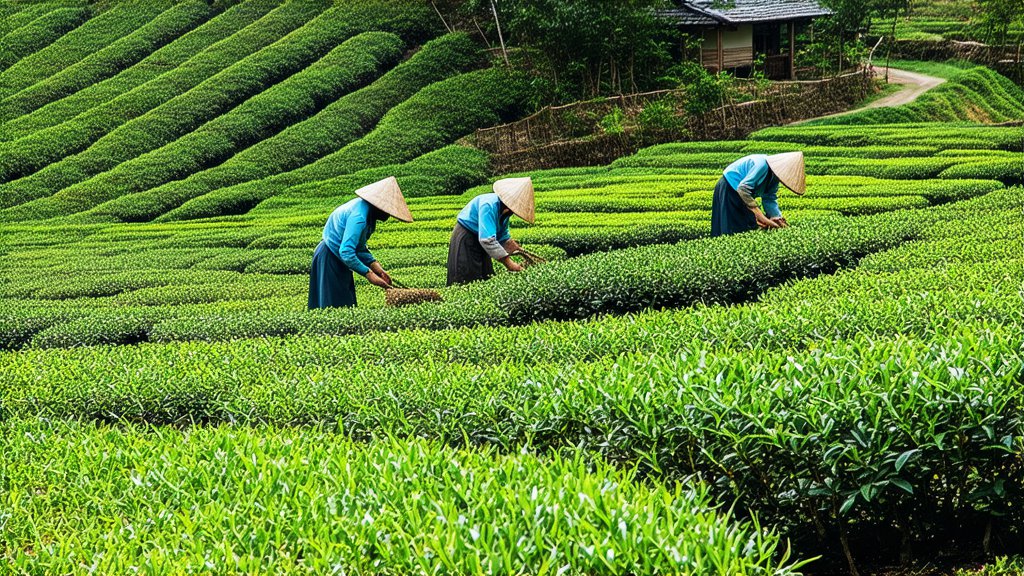
In the heart of China's vast and diverse landscape lies the Fujian province, a region renowned not only for its breathtaking natural beauty but also for its rich tea heritage. Among the myriad varieties that flourish here, one stands out with an ethereal charm and a history steeped in tradition—White Peony Tea (Bai Mudan 白牡丹). This article embarks on a cultural and sensory journey through the world of this exquisite tea, unraveling its historical roots, exploring its unique characteristics, delving into the intricate process of its production, and offering insights into the art of its appreciation.
A Glimpse into History
The origins of White Peony Tea trace back to the Tang Dynasty (618-907 AD), making it one of the oldest tea varieties still produced today. Its name, Bai Mudan, translates to "White Peony," which beautifully encapsulates both its appearance and the poetic essence embedded within Chinese culture. Legend has it that during the Tang Dynasty, a tea farmer named Wei discovered this tea accidentally when his tea plants were covered by snow, resulting in the unique silvery down that characterizes the tea. Over centuries, White Peony Tea evolved, becoming a symbol of purity and elegance, cherished by emperors and scholars alike.
Varieties and Classification
White Peony Tea falls under the broader category of white teas, which are minimally processed to retain their natural properties. Within this category, it is considered a premium grade due to its distinctive features. There are primarily two types based on the maturity of the leaves used:
-
Shoumei (首梅): Made from young shoots and leaves, Shoumei represents the highest quality tier. It consists of one bud and two leaves, with the buds covered in fine silver hairs, resembling peony blossoms.
-
Gongmei (贡眉): Slightly less refined than Shoumei, Gongmei includes older leaves and buds. While still maintaining a delicate flavor profile, it offers a more robust taste and can be aged longer without losing its qualities.
Both types share a common characteristic—a pale yellow liquor that exudes a subtle sweetness and a hint of floral notes, reflecting the purity and simplicity inherent in white teas.
The Art of Production
The craftsmanship behind White Peony Tea is a testament to the harmony between nature and human touch. The process begins in late spring when the first flush of buds and leaves emerge. These are meticulously hand-picked, ensuring only the finest parts of the plant are selected. Unlike other teas that undergo extensive rolling and oxidation, white teas like Bai Mudan are simply withered under the sun or indoors in a well-ventilated space. This natural drying process preserves the tea's inherent sweetness and delicate aroma.
After withering, the leaves undergo a gentle baking process to remove any remaining moisture, further enhancing their flavor profile. The entire production is carried out with utmost care to maintain the tea's natural properties, resulting in a brew that is both light-bodied and full of nuances.
Appreciating the Delicate Flavor
To truly appreciate White Peony Tea, one must engage all senses in the experience. The visual aspect starts with observing the dry leaves, which reveal a mix of green and silver hues, indicative of their youthfulness and freshness. Upon brewing, the water transforms into a pale yellow liquid, shimmering like liquid gold in the cup.
The aroma of Bai Mudan is subtle yet complex, often described as a blend of fresh hay, floral undertones, and a faint fruitiness. To fully capture this scent, it is recommended to use a clear glass teapot or a gaiwan (a traditional Chinese teacup with a lid), allowing the fragrance to waft upwards as the tea steeps.
Tasting White Peony Tea requires a mindful approach. The initial sip reveals a gentle sweetness, followed by a smooth, silky texture that glides over the palate. The aftertaste is clean, leaving a refreshing sensation that lingers long after the tea has been swallowed. Each subsequent infusion unveils new layers of flavor, making it a tea best savored slowly and thoughtfully.
For those new to white teas, starting with a lower temperature brew (around 160°F or 70°C) is advisable to avoid scalding the delicate leaves. Steeping times typically range from 1 to 3 minutes, depending on personal preference for strength. As with all fine teas, it's essential to use high-quality water, free from impurities, to ensure the true character of the tea shines through.
Conclusion
White Peony Tea embodies the essence of Chinese tea culture—its history intertwined with poetry, its production a dance between man and nature, and its consumption a meditative practice that transcends time. As you embark on your own journey with this remarkable tea, remember that each cup is not just a beverage but a bridge connecting you to centuries of tradition and the tranquil beauty of Fujian's tea gardens. Embrace the serenity, let the flavors unfold, and allow yourself to be transported to a realm where every sip tells a story.